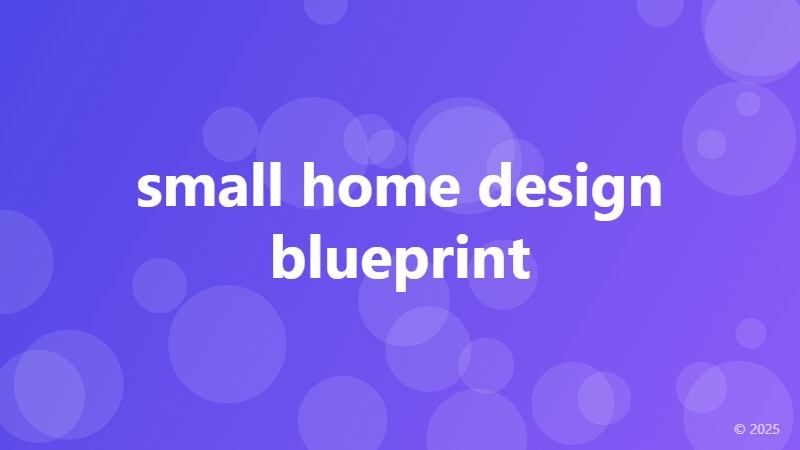small home design blueprint

Unlocking the Secrets of Small Home Design Blueprints
When it comes to building or renovating a small home, having a well-thought-out design blueprint is crucial. A small home design blueprint serves as a roadmap for creating a functional, efficient, and aesthetically pleasing living space, despite the limited square footage. In this article, we'll delve into the world of small home design blueprints, exploring the key elements, benefits, and essential considerations to keep in mind.
Key Elements of a Small Home Design Blueprint
A successful small home design blueprint takes into account several critical factors, including:
Space optimization: A well-designed small home makes the most of every square inch, incorporating multi-functional spaces and clever storage solutions.
Natural light: Maximizing natural light helps to create the illusion of more space, making the home feel brighter and more welcoming.
Flow and circulation: A thoughtfully designed floor plan ensures easy movement throughout the home, reducing congestion and improving functionality.
Sustainability: Eco-friendly materials, energy-efficient appliances, and sustainable building practices are essential considerations for small home design blueprints.
Benefits of Small Home Design Blueprints
Investing in a small home design blueprint offers numerous benefits, including:
Increased property value: A well-designed small home can significantly boost its resale value, making it more attractive to potential buyers.
Improved functionality: A carefully crafted design blueprint ensures that every aspect of the home is functional, efficient, and easy to use.
Enhanced livability: By incorporating natural light, ventilation, and clever storage solutions, small home design blueprints can create a more comfortable and enjoyable living environment.
Cost savings: A well-planned design blueprint helps to minimize construction costs, reducing waste and ensuring that resources are allocated efficiently.
Essential Considerations for Small Home Design Blueprints
When creating a small home design blueprint, it's essential to keep the following factors in mind:
Local building codes and regulations: Ensure that your design blueprint complies with local building codes, zoning laws, and regulations.
Climate and region: Design your small home with the local climate and region in mind, incorporating features that respond to the unique challenges and opportunities of the area.
Personal style and preferences: A small home design blueprint should reflect the homeowner's personal style, lifestyle, and preferences.
Budget and resources: Establish a realistic budget and identify available resources, ensuring that the design blueprint is feasible and achievable.
By understanding the key elements, benefits, and essential considerations of small home design blueprints, homeowners can create a functional, efficient, and beautiful living space that meets their unique needs and exceeds their expectations.